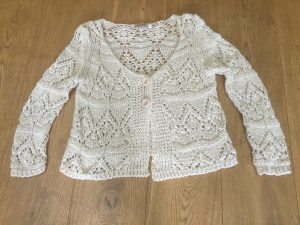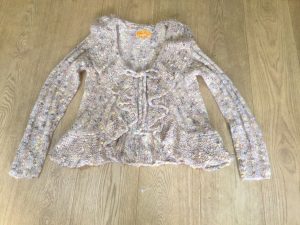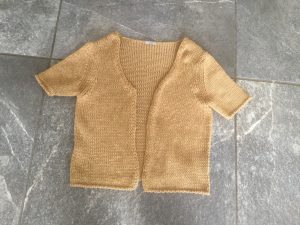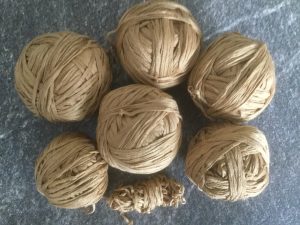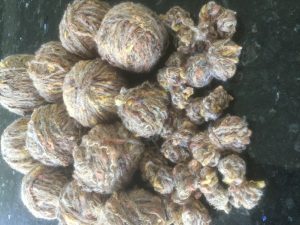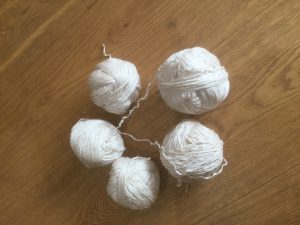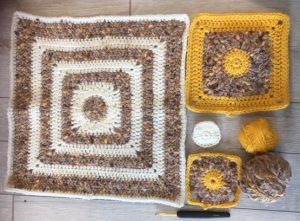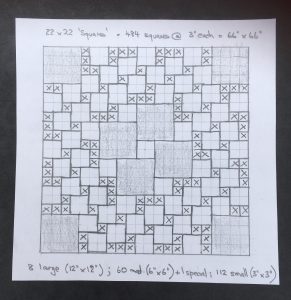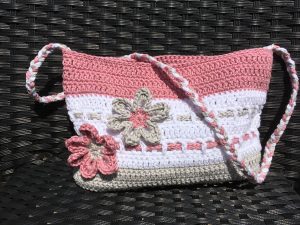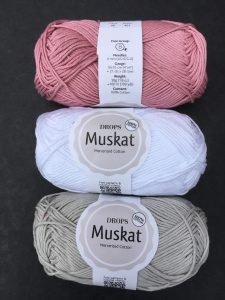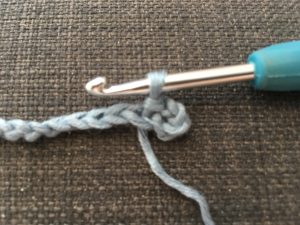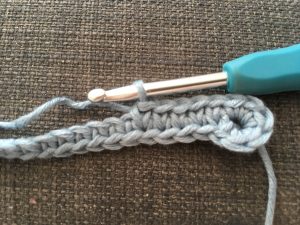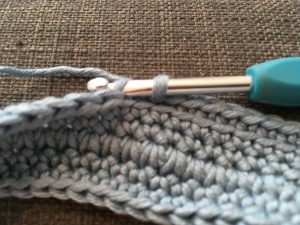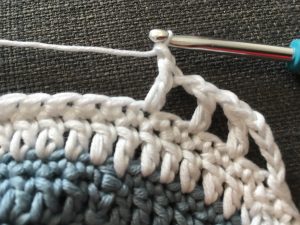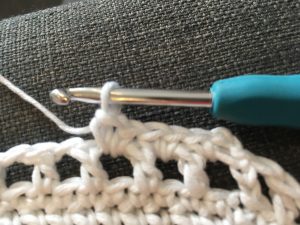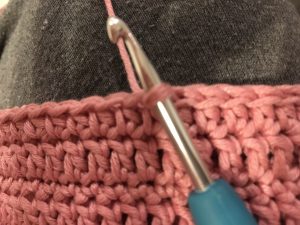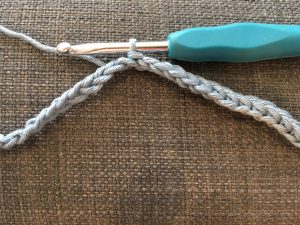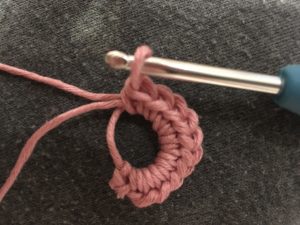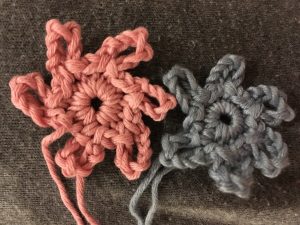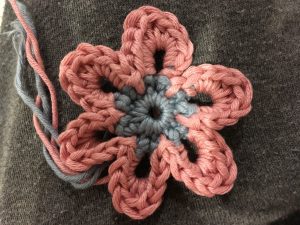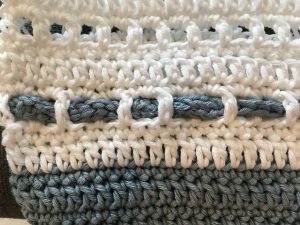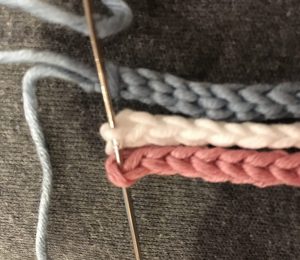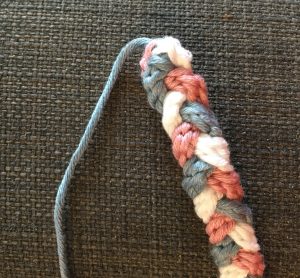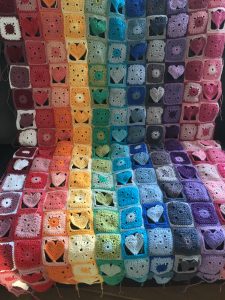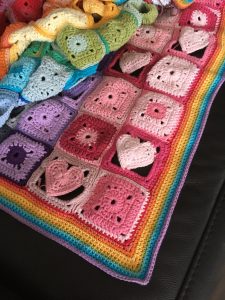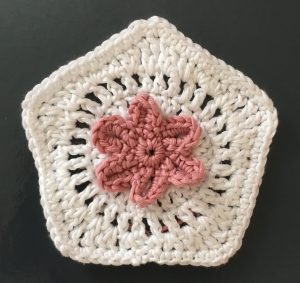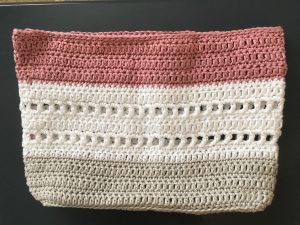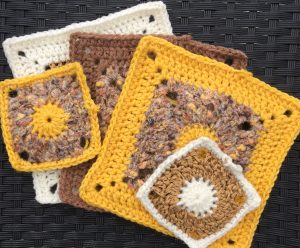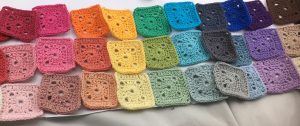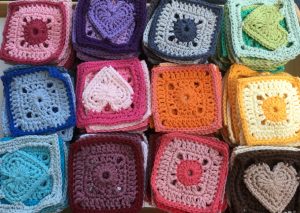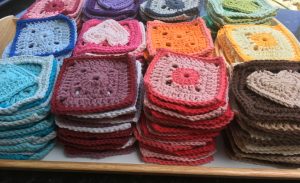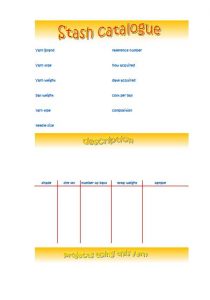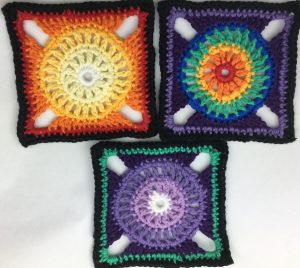This heart full of rainbows cushion is a companion project to my hearts and rainbows blanket. You will be working entirely in DC (UK terms) or SC (US terms). It is a simple project. However you will need to understand how to increase/decrease your stitches. I have suggested a method below but you might have one you prefer. The making-up instructions might be a bit tricky if you are new to crochet. I will put my instructions here and in the final PDF version of the pattern which will be available on Etsy. You can see the hearts and rainbows blanket here.

First things first. The yarn used to make the Heart Full of Rainbows Cushion is Lion Brand Yarns, Hometown USA yarn. This is a super chunky yarn which means the work grows really quickly! 🙂 I love this yarn for that reason and because it has lovely bright colours and is good value for the price. In the UK I buy all my yarn from Wool Warehouse. Note – at this point these are not affiliate links so I am not paid to promote either brand – I just love them!
To make the cushion you will need one ball of each of the colours of the rainbow. For the edging I used White and Black but if you wanted to keep the cost down you could edge the cushion in one of the other colours. You will also need a 9mm crochet hook.
I created a chart for this pattern which I like to print out and mark off as I go. I will write out the instructions long hand in the PDF pattern but if you want to get started, the free download is here:
Heart Full of Rainbows Chart (12803 downloads )Making the Heart full of Rainbows Cushion
Start at the bottom of the chart by making a chain of 4 using the violet yarn. Turn and work two DC (SC for US terms) starting in the third stitch from the hook. Chain four and turn the work.
Second row – work one DC (SC for US terms) into the third and fourth stitches from the hook. work 2 DC (SC for US terms) into the next two stitches. Chain 2 and turn the work.
Third row – work two DC (SC for US terms) into the first stitch. Work 4 DC (SC for US terms). Work 2 DC (SC for US terms) into the next stitch then chain two and turn the work.
Continue in this manner, increasing the number of stitches on each row to match the chart. Remember to change colour when the chart changes!!
When you get to the decrease rows again there are many methods you can use to decrease. To get a neater edge you can miss the second stitch of the row. You might find it easier to miss the first – this gives a stepped edge but as you are going to be edging the heart that should not be visible. When you chain two and turn at the end of the row simply miss the first stitch and work DC (SC in US terms) into the second. If the decrease is at the end of a row then stop one stitch short chain two and turn.
As you decrease follow the chart again and you will see that at the top of the heart you need to turn the work in the middle of the row. This allows you to complete one side of the top of the heart. You will need to rejoin the yarn in the middle of the work to complete the second side of the heart.
The final stage of each side of the cushion is to edge the heart. I did this in white but you could use whichever colour you like. This step gives you a neat edge to use when you join the two hearts together. Count the stitches you use on each side so that you can match front and back. The edging is entirely DC again (SC in US terms). Try to space your stitches so that the work lies flat without being stretched or pulled. I used the following number of stitches:
Working up the bottom side of the heart violet to Green – 27 stitches
For the straight section, part of the green, yellow and the start of the Orange, I used 10 stitches.
From the start of the decrease and up to the top of the heart I worked 15 stitches.
Work the six stitches across the top of the heart and from the top down to the centre I worked 14 stitches.
In the very centre of the heart where you have two stitches (number 26/27 on the orange row of the chart) work these two together.
Complete the second half of the edging to match the first. Work one round of DC (SC in US terms). At the centre of the heart again where you worked two stitches together, work three together on this round.
When you have finished one heart you will need to start all over again on the second side. I made two matching rainbow hearts but if you are using up scraps you could make the back of the cushion out of a single colour or just use whatever you have!
Making up the Heart Cushion
Now you should have two completed, edged hearts. I suggest you tie in the ends at this point but bear in mind that the back of this work is the inside of a cushion which nobody should ever see so there is no real need to make these ends disappear. The thickness of the yarn makes tying in ends neatly quite difficult. All you really need to do is secure them and make sure that nothing is visible from the front.
To finish the cushion you need to join the two hearts together. I used black for this – if your edging is neat this is a really quick job! Put the two hearts back to back ie with the sides you want to see on the outside. Join in black yarn (or your choice) and work DC (SC in US terms) all the way round putting your hook through the white edge stitches on both sides of the cushion. As you form your DC (SC in US terms) you will see that you are joining front to back.
Don’t join all the way round until you have put your cushion pad into the heart! I have done this – it made me feel very silly but it is easy to forget when you are on the downhill slopes towards a finished project!!
I have a separate post on creating the cushion pad which you can read here. If you want to be able to take your cushion cover off to wash it then you should leave an opening in the side which will need a separate fastening. I would recommend leaving a section of the bottom of one side of the heart. When you are edging just drop the back for a section so that you are only working into the white edge stitches on one heart.
My cushion has washable insides so I didn’t leave any openings to remove the cover.
I hope you like this heart cushion – the rainbow motif has come to stand for thank you to our nurses since I made mine! I have changed my social media image to this heart as my own small thank you. How our world has changed these last few weeks. Here’s hoping we get back to happier times soon.
Happy crocheting!
Annie 🙂
